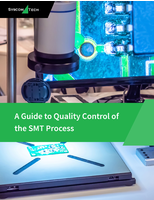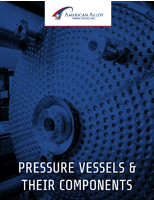Pratt & Whitney Rocketdyne Completes Assembly of Fuel Turbopump on NASA's J-2X Rocket Engine
CANOGA PARK, Calif. - Pratt & Whitney Rocketdyne successfully completed another major subassembly for NASA's first J-2X rocket engine. A highly-efficient and versatile engine, the J-2X will help sustain the critical design and manufacturing skills required for the United States to maintain its leadership position in human space exploration and its engineering expertise necessary to support national security. Pratt & Whitney Rocketdyne is a United Technologies Corp. (NYSE: UTX) company.
The J-2X fuel turbopump assembly follows the successful assembly of the oxidizer turbopump, which delivers high-pressure liquid oxygen to the main injector. The engine, whose first hot-fire tests are planned for early 2011 at Stennis Space Center in Mississippi, has the characteristics to power the upper-stage of a heavy-lift launch vehicle.
"Pratt & Whitney Rocketdyne continues to demonstrate readiness and the capability to support NASA as the nation embarks upon the next era of human spaceflight," said Jim Maser, president, Pratt & Whitney Rocketdyne.
John Vilja, vice president and program manager for the J-2X engine, Pratt & Whitney Rocketdyne, said the J-2X is a significant and long overdue development in upper-stage propulsion. "The J-2X will prove vital in continuing U.S. space exploration, advancing engineering skills, creating opportunities for missions beyond low-Earth orbit, and even providing opportunities for adaptation to alternate fuels in space," Vilja said.
The fuel pump is the heart of the J-2X engine. Much like the human heart pumps blood through the body, the fuel pump distributes liquid hydrogen through the engine at minus 400-degrees Fahrenheit. As the liquid hydrogen moves through the engine, it cools the main combustion chamber and nozzle, which are exposed to combustion gases that can reach temperatures up to 6,000-degrees Fahrenheit. The hydrogen is then mixed with the liquid oxygen and ignited to produce the thrust which will boost the launch vehicle.
The J-2X generates a tremendous amount of energy for what is a relatively small machine. For instance, if it could pump water, the engine's fuel pump would empty a 20,000-gallon swimming pool in less than two minutes. A single first-stage turbine blade, which is less than one-inch tall, can generate about 150 horsepower - or roughly the equivalent to the power of a compact automobile engine. These characteristics demonstrate a level of performance ideal for upper-stage lift of a heavy launch vehicle to the International Space Station and beyond.
Pratt & Whitney Rocketdyne, a part of Pratt & Whitney, is a preferred provider of high-value propulsion, power, energy and innovative system solutions used in a wide variety of government and commercial applications, including the main engines for the space shuttle, Atlas and Delta launch vehicles, missile defense systems and advanced hypersonic engines. For more information about Pratt & Whitney Rocketdyne, go to www.prattwhitneyrocketdyne.com. Pratt & Whitney Rocketdyne is headquartered in Canoga Park, Calif., and has facilities in Huntsville, Ala.; Kennedy Space Center, Fla.; West Palm Beach, Fla.; and Stennis Space Center, Miss.
Pratt & Whitney is a world leader in the design, manufacture and service of aircraft engines, space propulsion systems and industrial gas turbines. United Technologies, based in Hartford, Conn., is a diversified company providing high technology products and services to the global aerospace and commercial building industries.
SOURCE Pratt & Whitney Rocketdyne
CONTACT:
Nancy Colaguori,
Pratt & Whitney Rocketdyne,
+1-561-796-2219,
nancy.colaguori@pwr.utc.com,
or
Carri Karuhn,
Pratt & Whitney Rocketdyne,
+1-818-586-4963,
carri.karuhn@pwr.utc.com
Web Site: www.prattwhitneyrocketdyne.com




